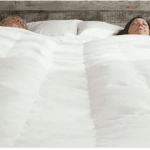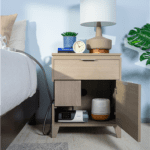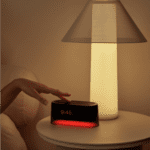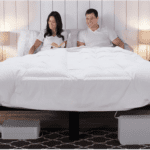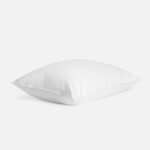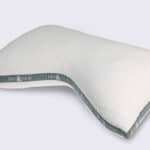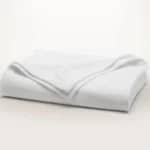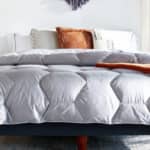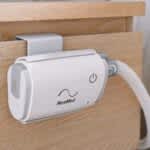When you’re mattress shopping, you’ll have many details to consider including two of the most important – mattress type and firmness level. Mattress manufacturers craft beds that range from soft to extra firm to appeal to many types of sleepers.
We’ll explain what the term firmness level actually means, how we assign firmness levels, and help you determine which one is best for your body weight and favorite sleeping position. You’ll learn why firmness levels are important and how firmness differs from support.
Once you know what firmness level you need, take a look at our choices for the best mattress of 2025. Our top picks include a wide range of feels to suit all sleeper types and body weights.
Why Is Mattress Firmness Important?
Firmness is one of the most important factors to consider when choosing a new mattress. The right firmness level supports your body while providing enough cushioning to keep you comfortable. A mattress that’s too soft can allow you to sink too far into the bed, while one that’s too firm may cause pressure points or pain.
A mattress’ materials and construction type contribute to its overall firmness level. Companies layer materials strategically to change how a mattress feels and performs from one firmness level to another. Performance factors like responsiveness, temperature regulation, and motion transfer are all affected by a mattress’ firmness level.
For example, the same mattress model may come in both medium soft and medium firm options. Even though they share the same materials, the medium soft version will likely isolate motion better than the medium firm model, while the medium firm may sleep cooler because its materials don’t compress as easily.
Firmness vs. Support
While mattress firmness and support affect each other and have a relationship, they aren’t interchangeable terms. Firmness indicates how soft or hard a bed feels, while support refers more directly to proper spinal alignment. The right firmness level for your weight and sleeper type can help ensure that your mattress supports your spine correctly.
Our Mattress Firmness Scale
In our test lab, we use a 10-point scale to measure a bed’s firmness level. Soft mattresses have lower numbers, while firmer models are assigned higher numbers. A common, universal firmness scale doesn’t exist, so we use this method to maintain consistency when we test mattresses.
| Firmness Level | Description |
|---|---|
| Extra Soft (1) Soft (2-3) | Few manufacturers make beds this soft, but some do. Exceptionally soft mattresses have significant cushioning and cradle the body deeply. They also tend to isolate motion well. However, they typically retain more heat than other models and often lack responsiveness. |
| Medium Soft (4) Medium (5) Medium Firm (6) | Beds in this range are quite popular because their middle ground feel works well for many kinds of sleepers. Medium soft to medium firm mattresses typically have a balance between cushioning and pushback, which can help alleviate pressure point pain. They also sleep cooler than soft models, though they may have less edge support and structure than firmer beds. |
| Firm (7-8) Extra Firm (9-10) | While firm and extra firm mattresses aren’t the right choice for everyone, they are great for sleepers who need an even sleep surface. They have limited compression and lack pressure relief as a result. However, they tend to be quite responsive, easy to move around on, and they often regulate temperature effectively. |
How Do You Choose the Right Mattress Firmness?
Despite what many mattress manufacturers would lead you to believe, there is no “one-size-fits-all” firmness level. Your weight, favorite sleeping position, preferences, and unique requirements all impact which one will work best. The best option should support your spine evenly while providing the right amount of cushioning to keep you comfortable.
Sleeping Position and Body Type
When it comes to choosing the right firmness level, the two biggest things to factor into your decision are body type and sleeping position. Lighter and heavier sleepers compress mattress materials at different rates, affecting how well a particular bed can support their spines. People under 130 pounds need less structure and pushback than sleepers over 230 pounds, so it’s important to choose a mattress with a firmness level that’s appropriate for your weight.
Sleeping position is also critical to consider. Two people with the same weight will interact with their mattress differently depending on which position they sleep in. Side sleepers need a softer mattress than stomach sleepers do, because their hips and shoulders press in with the majority of their weight, while stomach sleepers have more surface area to evenly disperse their body weight.
Side Sleepers
Side sleepers typically like softer mattresses than other sleeper types because their hips and shoulders can develop pressure points on a mattress that lacks adequate cushioning. Most side sleepers prefer a model between medium soft (4) and medium firm (6), though personal preference can affect this.
Back Sleepers
Back sleepers like a mattress that balances pushback and cushioning. Ideally, their mattress will support the spine while cradling the lower back to prevent lumbar pain. Many back sleepers like models that fall between medium (5) and firm (7) on our scale, but those under 130 pounds might like a softer bed and people above 230 pounds will appreciate the additional pushback that extra firm models provide.
Stomach Sleepers
Stomach sleepers need firmer mattresses than back and side sleepers do because their spines are more prone to curving while they sleep. A mattress that’s too soft can allow the midsection to sink, creating a bend in their back. To prevent this, most stomach sleepers should opt for a mattress that falls between medium (5) and extra firm (9), according to their weight.
| Side Sleepers | Back Sleepers | Stomach Sleepers | Combination Sleepers | |
|---|---|---|---|---|
| Under 130 lbs. | Soft (3) to Medium (5) | Soft (3) to Medium (5) | Medium Soft (4) to Medium Firm (6) | Soft (3) to Medium (5) |
| 130 to 230 lbs. | Medium Soft (4) to Medium (5) | Medium (5) to Firm (7) | Medium (5) to Firm (7) | Medium Soft (4) to Medium Firm (6) |
| Over 230 lbs. | Medium Firm (6) to Firm (7) | Firm (7, 8) to Extra Firm (9) | Firm (7, 8) to Extra Firm (9) | Firm (7, 8) |
Pain Relief
If you experience back, hip, or joint pain, the right mattress firmness level can help alleviate discomfort, while one that’s not right might amplify problems. The ideal firmness level will have a balanced surface that pushes back beneath heavier parts of your body and cradles lighter areas. A mattress with inadequate support can result in spinal misalignment, a leading cause of back pain.
One that’s too soft can cause your spine to curve and one that’s too firm can create pressure points. Choose a model that’s firm enough to have enough structure to support your weight while you sleep in your preferred position and soft enough to cushion your joints.
Consider an Adjustable or Dual-Firmness Mattress
Couples with different preferences and individuals who want to be able to change firmness levels often may appreciate an adjustable, flippable, or dual-firmness mattress, which all allow you to avoid the choice between firm vs. soft.
- Adjustable beds: Airbeds have a support core made from an air chamber that allows users to adjust their bed’s firmness level using a remote. On larger beds, each side adjusts individually to let partners choose their own firmness level.
- Dual-firmness: Airbeds fall under the dual-firmness umbrella, as do split king mattresses. If an airbed isn’t in your budget, a split king is an excellent alternative. They are essentially two twin XL mattresses placed on the same bed frame, which allows you to sleep next to your partner while using a separate firmness level.
- Flippable mattresses: A flippable mattress has two distinct sleep surfaces and firmness levels on each side, allowing you to swap between them whenever you like.













